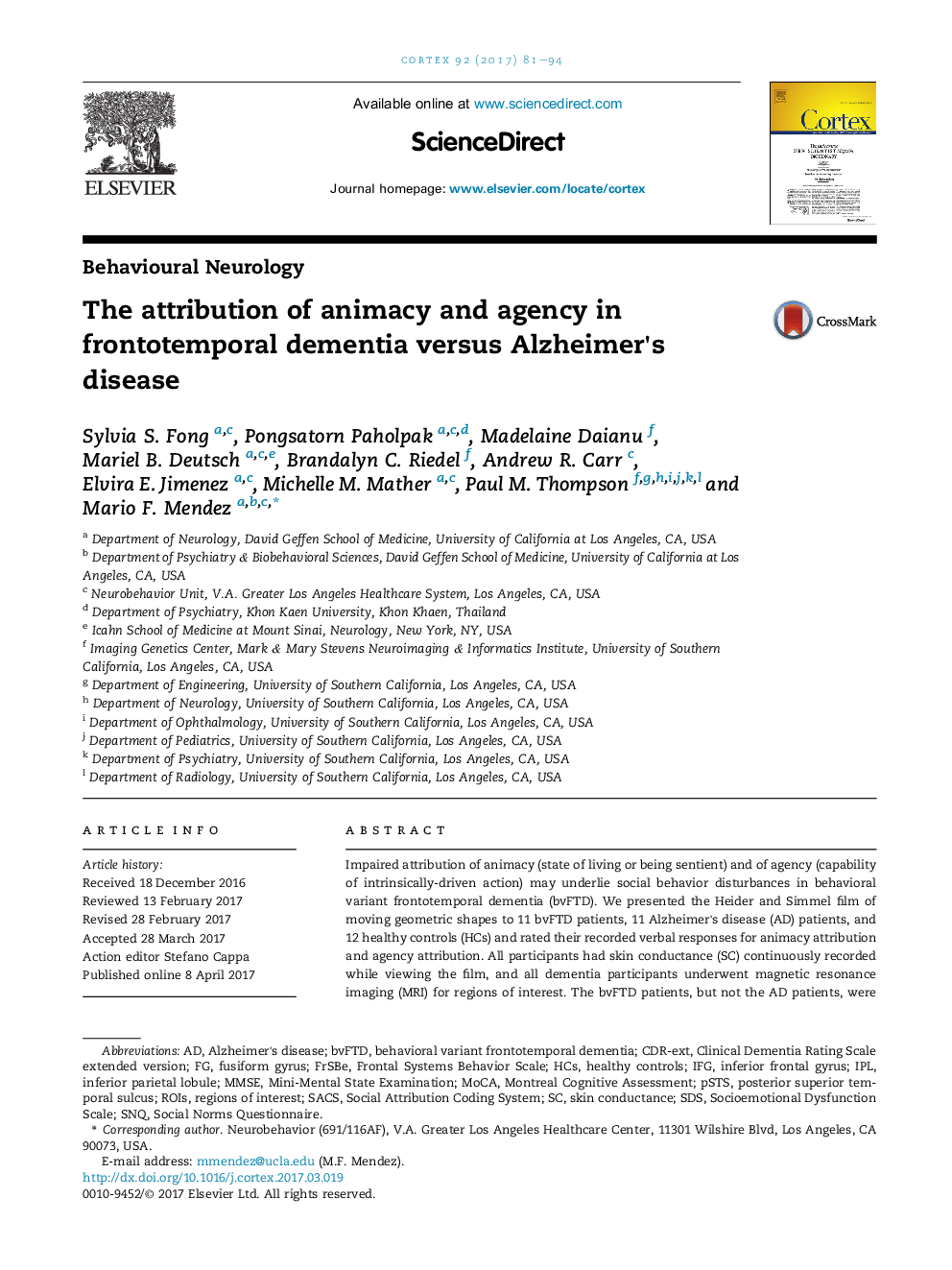| Article ID | Journal | Published Year | Pages | File Type |
|---|---|---|---|---|
| 5044510 | Cortex | 2017 | 14 Pages |
Impaired attribution of animacy (state of living or being sentient) and of agency (capability of intrinsically-driven action) may underlie social behavior disturbances in behavioral variant frontotemporal dementia (bvFTD). We presented the Heider and Simmel film of moving geometric shapes to 11 bvFTD patients, 11 Alzheimer's disease (AD) patients, and 12 healthy controls (HCs) and rated their recorded verbal responses for animacy attribution and agency attribution. All participants had skin conductance (SC) continuously recorded while viewing the film, and all dementia participants underwent magnetic resonance imaging (MRI) for regions of interest. The bvFTD patients, but not the AD patients, were impaired in animacy attribution, compared to the HCs. In contrast, both bvFTD and AD groups were impaired in agency attribution, compared to the HCs, and only the HCs had increasing SC responsiveness during viewing of the film. On MRI analysis of cortical thicknesses, animacy scores significantly correlated across groups with the right pars orbitalis and opercularis; agency scores with the left inferior and superior parietal cortices and the supramarginal gyrus; and both scores with the left cingulate isthmus involved in visuospatial context. These findings suggest that bvFTD is specifically associated with impaired animacy attribution from right inferior frontal atrophy. In contrast, both dementias may have impaired agency attribution from left parietal cortical atrophy and absent SC increases during the film, a sympathetic indicator of attribution of a social “story” to the moving shapes. These findings clarify disease-related changes in social attribution and corroborate the neuroanatomical origins of animacy and agency.
